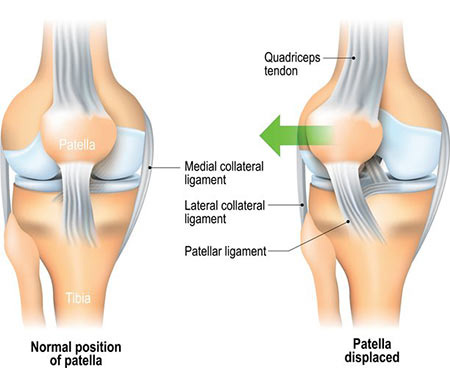 Midtown Manhattan
36 W 44th St Ste 1416 New York, NY 10036
Midtown Manhattan
36 W 44th St Ste 1416 New York, NY 10036
- (212) 621-7746
- text us
- BOOK ONLINE Call for Same Day Appointments
 Midtown Manhattan
36 W 44th St Ste 1416 New York, NY 10036
Midtown Manhattan
36 W 44th St Ste 1416 New York, NY 10036
Your patella or kneecap protects the cartilage and tendons of your knee. Chondromalacia patella is when one of your kneecaps is afflicted with deteriorating cartilage. If you have knee pain, seek out chondromalacia patella treatment from NYC sports injury doctor and pain specialist. Chondromalacia patellae is when both kneecaps are affected. Don’t wait; make an appointment with the best rated knee specialist in New York, get treatment for chondromalacia patella.
 From the running track to the basketball court to a stroll through Midtown Manhattan, you wouldn’t get anywhere without healthy, pain-free knees. When knee pain hits, it makes every facet of your life harder to manage. One common source of knee pain is chondromalacia patella. Put simply, it’s the breakdown of cartilage under your kneecap — the patella — causing discomfort due to the resulting friction between your leg bones.
From the running track to the basketball court to a stroll through Midtown Manhattan, you wouldn’t get anywhere without healthy, pain-free knees. When knee pain hits, it makes every facet of your life harder to manage. One common source of knee pain is chondromalacia patella. Put simply, it’s the breakdown of cartilage under your kneecap — the patella — causing discomfort due to the resulting friction between your leg bones.
While chondromalacia patella often strikes athletes, especially runners, it can affect just about anyone. Even if you’re not an athlete, a visit to a New York City sports medicine clinic is the first step toward diagnosis, treatment, and relief of this troublesome knee pain. The pain from chondromalacia patella is worse than the pain from bursitis or tendonitis.
The kneecap, or patella, is just what it sounds like: a small, curved, cap of bone that covers the joint where your leg bones meet. It’s cushioned by cartilage, allowing your knee to bend smoothly and easily. The cartilage provides a layer of protection between the bones.
Chondromalacia patella doesn’t usually have any visible signs, although you may notice that your kneecap looks a little off as it slips to the side. Other symptoms of chondromalacia patellae include:
Occasionally, chondromalacia patella can cause your knee to give out, resulting in a loss of balance or a fall. Seeking treatment for chondromalacia patella, even if the pain seems relatively minor, can help protect your overall well-being.
Walked in with knee pain and anxiety; walked out with a plan and hope for a favorable outcome. Dr knows what he’s doing, and if you have knee pain like I do, please check him out. His staff is professional and friendly as well.
Crackle PopAthletes are most at risk for developing chondromalacia patellae. If you play sports that involve running, jumping or other repeated impacts to the knees, you may eventually need chondromalacia patella treatment. There are, however, other risk factors for developing the condition, such as:
When you visit your Manhattan sports doctor’s office in search of a diagnosis, your physician performs a thorough examination of your knees. The doctor feels your kneecap and the surrounding area, manipulates the joint to see when and how the discomfort presents itself and takes an inventory of your symptoms and medical history. Often, that’s enough to make the diagnosis.
If further information is needed or prior treatments have been unsuccessful, your doctor may order further tests, including:
Chondromalacia patella treatment usually starts with prevention and pain management. Over-the-counter anti-inflammatory medications and topical analgesic creams can ease the immediate pain. Your NYC pain specialist recommends that you rest your knee and apply an ice pack to help reduce the swelling and discomfort.
With treatment, most people recover from chondromalacia patella. In extreme cases, surgery is a last option to resurface your kneecap, release ligament tension or change the placement of muscles to allow greater ease of movement.
But for the most part, taking preventative action can help ensure that you’re stepping live through life without pain:
Do you have any questions about the chondromalacia patella treatment we offer in NYC? Would you like to schedule an appointment with the best rated knee pain doctor Febin Melepura MD of sports pain management clinic in NYC? Please contact our office for consultation with the top pain relief specialist in Midtown Manhattan.
Sports Injury & Pain Management Clinic of New York
Febin Melepura, MD is a top rated, best in class interventional pain management doctor. He is a nationally recognized pain relief specialist and is among the top pain care doctors in New York City and the country. He is an award winning expert and contributor to a prominent media outlets.
Dr. Febin Melepura has been recognized for his thoughtful, thorough, modern approach to treating chronic pain and, among other accolades, has been named a “top pain management doctor in New York”, and one of “America’s Top Doctors™” for an advanced sports injury treatments.